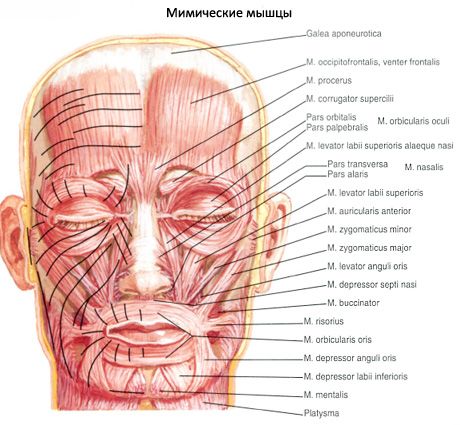Medical expert of the article
New publications
The muscles of the head
Last reviewed: 04.07.2025

All iLive content is medically reviewed or fact checked to ensure as much factual accuracy as possible.
We have strict sourcing guidelines and only link to reputable media sites, academic research institutions and, whenever possible, medically peer reviewed studies. Note that the numbers in parentheses ([1], [2], etc.) are clickable links to these studies.
If you feel that any of our content is inaccurate, out-of-date, or otherwise questionable, please select it and press Ctrl + Enter.
The muscles of the head are divided into facial muscles and chewing muscles.
The facial muscles differ from the muscles of other areas of the human body in origin, nature of attachment and functions. They develop on the basis of the second visceral arch, are located under the skin and are not covered by fascia. Most of the facial muscles are concentrated around the natural openings in the face. The muscle bundles of the facial muscles have a circular and radial orientation. The circular muscles act as sphincters (squeezers), the radially located ones - expanders. Beginning on the surface of the bones or on the underlying fascia, these muscles end in the skin. Therefore, when contracting, the facial muscles are able to cause complex movements of the skin, changing its relief. Expressive movements of the facial muscles (facial expressions) reflect the internal state of mind (joy, sadness, fear, etc.). The facial muscles also participate in articulate speech and the act of chewing.
The masticatory muscles are derivatives of the mesenchyme of the first (mandibular) visceral arch. In the way they originate and attach, these muscles do not differ from other skeletal muscles. They act on the temporomandibular joint and set in motion the only movable bone of the facial skull - the lower jaw, providing mechanical grinding of food - chewing (hence their name). The participation of the masticatory muscles in articulate speech and other functions associated with the movements of the lower jaw is indisputable.


Facial muscles
According to their location (topography), the facial muscles (mimic) are divided into the muscles of the cranial vault; muscles surrounding the eye slit; muscles surrounding the nasal openings (nostrils); muscles surrounding the mouth opening and muscles of the auricle.
Masticatory muscles
The chewing muscles develop on the basis of the first visceral (lower jaw) arch. These muscles originate on the bones of the skull and are attached to the lower jaw - the only movable bone, providing a variety of movements in humans in the temporomandibular joint.


 [
[